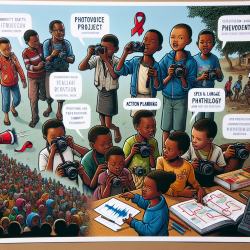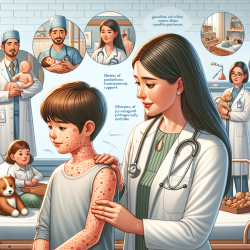Introduction
In the quest for innovative therapeutic approaches, the study titled "Developing Action Plans in Youth Photovoice to Address Community-Level HIV Risk in Rural Malawi" offers a compelling model. This research underscores the power of youth-driven initiatives in creating impactful community health interventions. By leveraging the Photovoice methodology, the study not only addresses HIV risks but also empowers youth to engage in community-level change. This blog will explore how practitioners, especially those in speech-language pathology, can incorporate these findings to enhance therapeutic outcomes for children.
Understanding Photovoice and Its Impact
Photovoice is a participatory action research method that enables participants to capture their community's assets and challenges through photography. This visual approach is particularly effective with youth, as it aligns with their developmental stage and technological engagement. In the Malawian study, youth identified community situations contributing to risky sexual behaviors and developed action plans to address these risks. This process not only fostered critical thinking and problem-solving skills but also facilitated dialogue with community leaders, leading to tangible community changes.
Lessons for Practitioners
As practitioners, especially those working with children, there are several key takeaways from this study:
- Empowerment Through Participation: Encourage children to take an active role in their therapy by using participatory methods like Photovoice. This can increase engagement and ownership of their progress.
- Visual and Interactive Tools: Incorporate visual tools and interactive activities that resonate with children’s interests and developmental stages. This can enhance their understanding and retention of therapeutic concepts.
- Community Involvement: Foster a collaborative environment by involving family and community members in the therapeutic process. This holistic approach can lead to more sustainable outcomes.
Encouraging Further Research
The Malawian study highlights the potential of youth-driven initiatives in addressing complex community issues. However, there is a need for further research to explore the applicability of Photovoice in different settings and with diverse populations. Practitioners are encouraged to pilot similar projects in their communities, adapting the methodology to address local challenges and needs.
Conclusion
Integrating the principles of Photovoice into therapeutic practices can transform how we engage with children and address community health issues. By empowering youth to identify and address their challenges, we can foster a generation of proactive, solution-oriented individuals. To read the original research paper, please follow this link: Developing Action Plans in Youth Photovoice to Address Community-Level HIV Risk in Rural Malawi.










